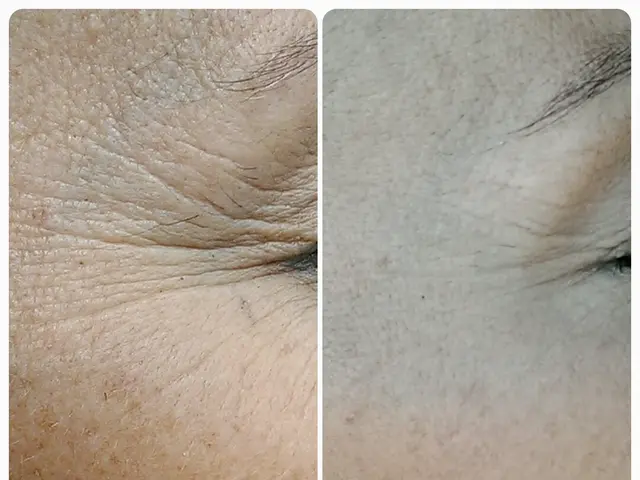Sunscreen 101: Seven Questions Answered to Protect Your Skin Under the Sun
Sunscreen Factor: Deciphering the SPF Protection
Looking for the perfect sunscreen? With countless options and jargon like SPF and UV-protection, it can be daunting. Fear not! We've got you covered with the answers to seven key questions that will help you make an informed decision.
1. What's the deal with SPF?
The sun protection factor (SPF) indicates a product's effectiveness in shielding your skin from solar ultraviolet B (UVB) rays, responsible for causing sunburn. Higher SPF numbers mean longer protection time. However, no sunscreen offers complete protection, so don't treat it as a free pass for endless sunbathing.
For fair-skinned individuals with minimal inherent protection, a high-SPF sunscreen can extend their time under the sun by up to 500 minutes, while those with naturally robust protection might only need a low SPF.
2. Which sunscreen suits me best?
Choosing the ideal sunscreen involves considering skin type, activity, and personal preference. Opt for a moisturizing product if your skin is dry, while those with oily complexions might prefer a lightweight, oil-free option. For sensitive skin, look for fragrance-free or hypoallergenic sunscreens.
If you're into sports or spending long hours outdoors, choose a sweat-resistant sunscreen and reapply as needed. And remember, the most effective sunscreen for you is the one you'll actually use!
3. When should I slather on the sunscreen?
The importance of sun protection depends on factors like time of day, season, and location. On overcast days, UV radiation may be just as potent as on clear days. Check the UV index in your beloved weather app to stay informed. The Federal Office for Radiation Protection recommends protecting your eyes and skin when the index exceeds 3.
4. What's the right application technique for sunscreen?
Remember, sunscreen is just one aspect of sun protection – a hat and protective clothing can make a significant difference. Don't forget those frequently overlooked spots like ears, lips, neck, and transition zones between skin and garments.
Apply sunscreen 15-30 minutes before sun exposure to ensure it effectively binds to the skin. Use about 1/4 teaspoon for your face and a shot glass full for your entire body. Dermatologists suggest applying moisturizer before sunscreen to hydrate and enhance its effectiveness.
5. Is there a precise amount for optimal sunscreen application?
Most people tend to apply less sunscreen than recommended. For full-body protection, use 1 ounce (a shot glass full) for adults. For reapplication, apply 1/4 teaspoon for your face. Reapply sunscreen every two hours, especially after swimming, sweating, or toweling off.
6. What about children?
Children's skin is more delicate and prone to sunburn. Opt for full-coverage, physical sunscreens that reflect sunlight and provide immediate protection, rather than chemical sunscreens that can be absorbed into the skin. Ensure sunscreens for children are fragrance-free and hypoallergenic to minimize the chance of irritation.
7. How long does sunscreen last?
Sunscreens purchased in pristinecondition and unopened can be used for more than a year. However, once opened, sunscreens typically have a shelf life of 12 months. If yours has been lying around, discard it if it smells rancid, the oil and water have separated, or it's been exposed to extreme heat.
By adhering to these guidelines and selecting sunscreen based on your unique needs and activities, you'll be well-equipped to protect your skin from harmful UV rays and fully enjoy your time under the sun.
- To create a well-informed decision on sunscreen, consider factors like SPF, skin type, personal preferences, and medical conditions such as skin health and sensitivity.
- When using sunscreen, remember that higher SPF values correspond to longer protection times, but complete protection is not guaranteed.
- It is essential to apply sunscreen consistently, using appropriate amounts (1/4 teaspoon for the face and a shot glass full for the body) and following the recommended reapplication intervals (every two hours, especially after swimming, sweating, or toweling off).
- Choose a sunscreen that suits your skin type, activity, and personal preferences, such as a moisturizing formula for dry skin or a lightweight, oil-free option for oily complexions.
- For children, select full-coverage, physical sunscreens that provide immediate protection and are fragrance-free and hypoallergenic to minimize the risk of irritation. Ensure you adhere to the guidelines for proper usage and storage to maintain the effectiveness of your chosen sunscreen.








